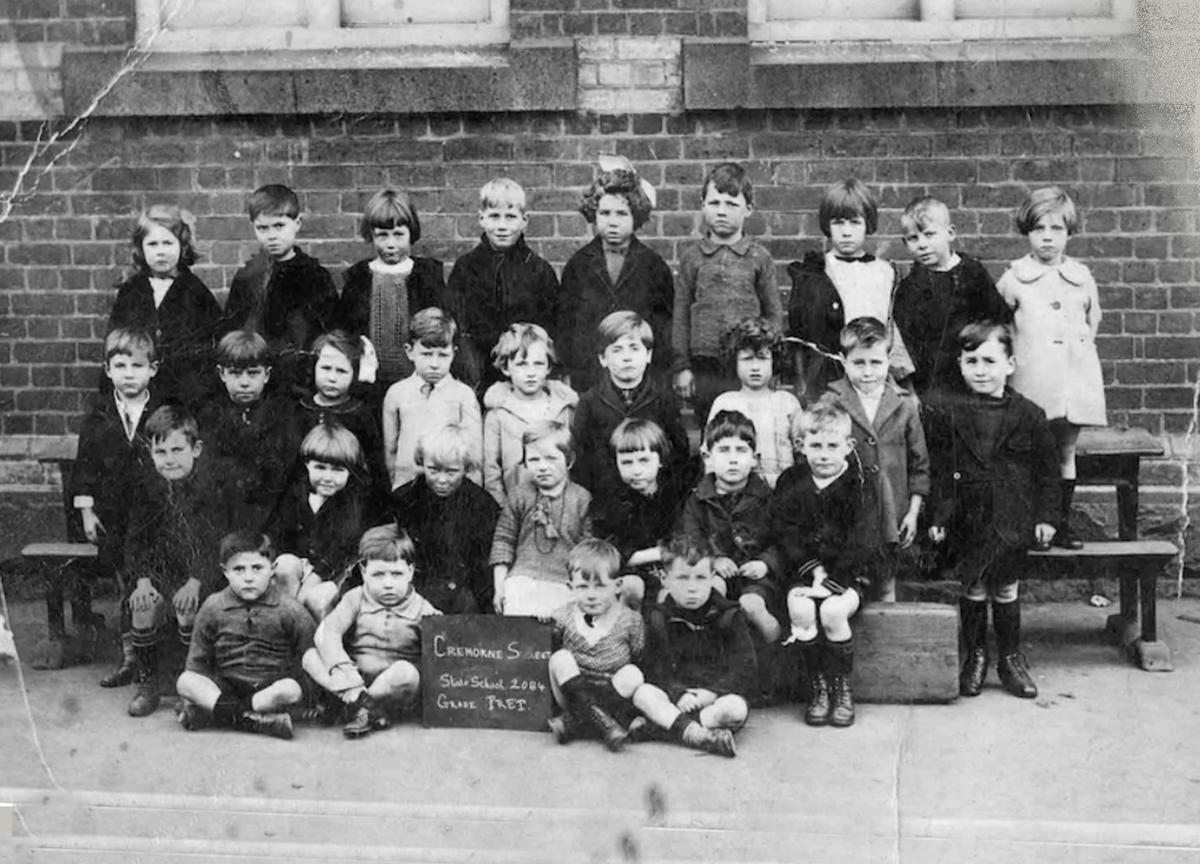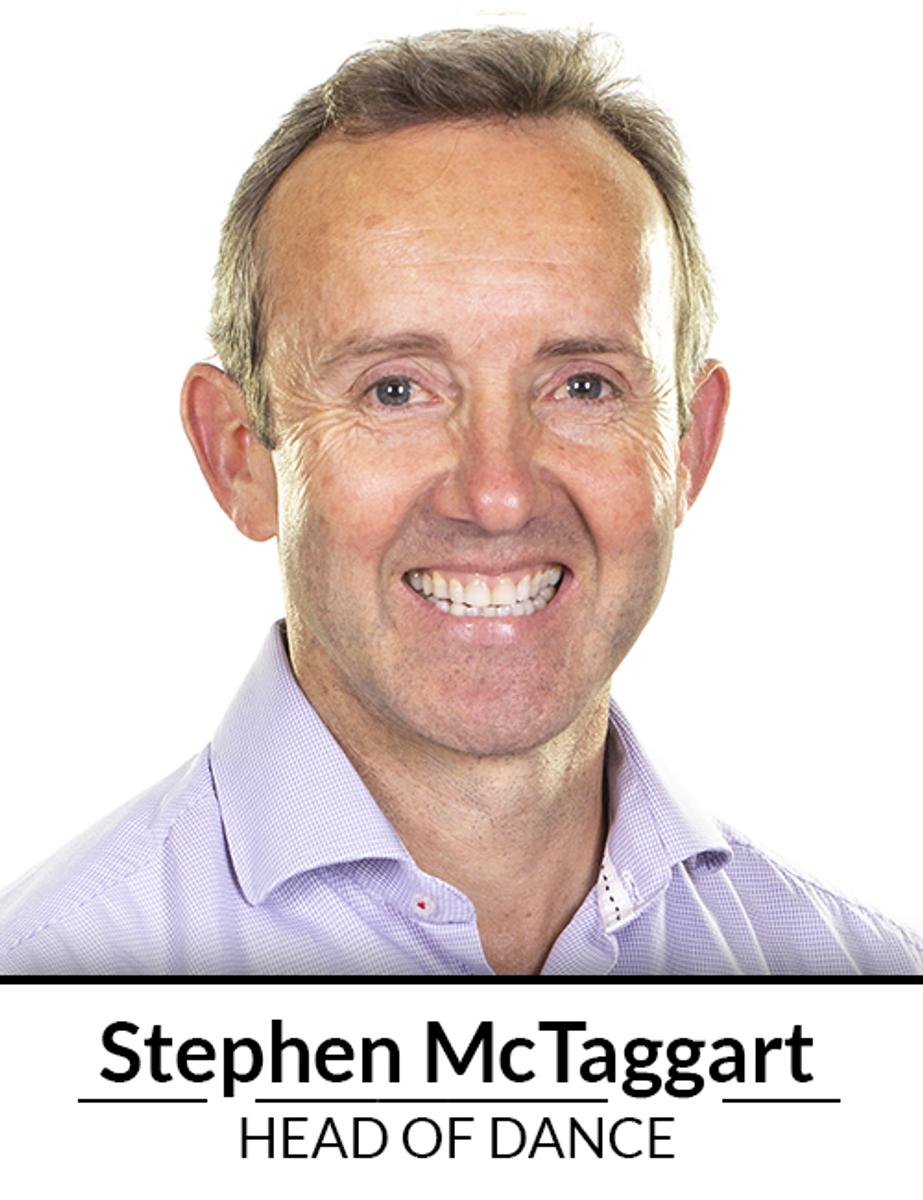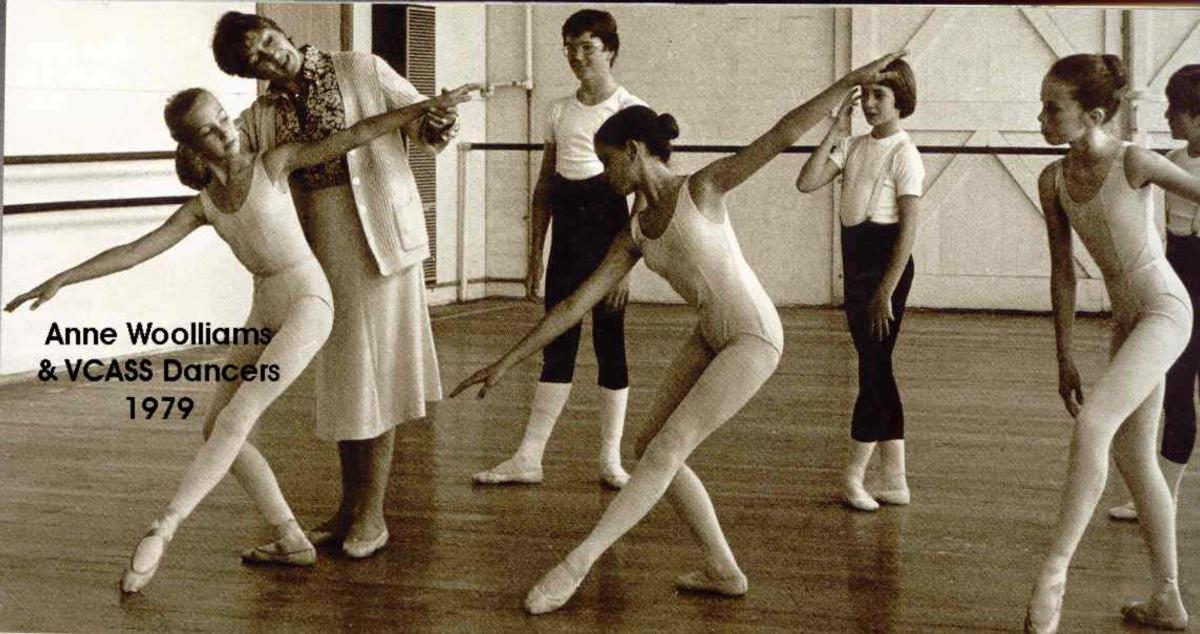150 YEARS
OF EDUCATION
Students studying at Rainbow State School in north-west Victoria, circa 1900.
(Supplied: Public Record Office Victoria)

150 YEARS
OF EDUCATION
Students studying at Rainbow State School in north-west Victoria, circa 1900.
(Supplied: Public Record Office Victoria)
This year marks 150 years of public education in Victoria.
In 1872 the introduction of the Education Act made Victoria the first Australian colony (and one of the first jurisdictions in the world) to offer free, secular and compulsory education to its children.


Being a forerunner of free, secular and compulsory education is one of Victoria’s greatest achievements.
Before 1872 most children living in Victoria were enrolled at government-aided institutions, others attended independent or church schools. A few were educated at home by tutors and, at a time when schooling was neither compulsory nor free, some received no formal education at all.
DID YOU KNOW? Before 1872 the only education available for poor families was at the few so-called "ragged schools", set up in the late 1850s to teach underprivileged children. Prior to the 1872 Education Act, school really was a luxury so many families couldn't afford. The act saw Victoria become the first Australian state to create a system of free, secular and compulsory education.


DID YOU KNOW? During World War I the state's schoolchildren did odd jobs for small fees to raise funds for the war. "They created gardens and sold vegetables, they made brooms, skinned rabbits, they even collected leeches for local hospitals," said Ms Luciano. She said this organised child workforce raised more than 410,000 pounds towards the Australian war effort. A greater price was paid by some of the teachers — of the 740 Victorian teachers who enlisted to fight, 146 died in the war.


The 150 year anniversary of public education is an opportunity to commemorate the long and proud history of high-quality education in Victoria and to reflect on our own engagement with the state education system.
The Victorian College of the Arts Secondary School would like to recognise and celebrate being a part of public education by reflecting on our history and hearing from some of our long term staff members.
DID YOU KNOW? In the late 1970s artist, visionary and Director of the Victorian College of the Arts, Mr Lenton Parr saw a need for a secondary school where students with talent or potential in music or dance could develop their talent, irrespective of their socio-economic status. This vision resulted in the Victorian College of the Arts Secondary School being established as the secondary school of the Victorian College of the Arts and a 'School' of the VCA in late 1977. The first intake of students was in 1978.


Establishing the school was an exciting challenge; there were no buildings, classrooms, books or blackboards. Mobile chalkboards were wheeled around and five portable buildings were placed on the college car park. In 1980 the school moved to Lanes Motors in Sturt Street before returning to the portables and Matron’s House. Even Roy Grounds' former offices at the National Gallery of Victoria were used for teaching. The music program was organised by Mr Keith Field and Ms June Ralfe, while Mr Jan Stripling and Ms Patty Cox established the dance program, commencing dance classes at the Ballet Victoria Studios in Fitzroy. The academic staff was drawn from excellent teachers Jack Pitt knew from South Melbourne Technical School. VCA staff were very supportive of the secondary school and VCA Secondary School now names its three most prestigious awards after these Founders of the school. The Senior Academic Award is called The Lenton Parr Award, the Senior Dance Award The Anne Woolliams Award and the Senior Music Award The John Hopkins Award.


In 1981, the school was incorporated as a Secondary School under the umbrella of the VCA – as a fifth school of the College. The name was changed from the VCA Technical School (VCATS) to the VCA Secondary School (VCASS). In 1985 the building now known as the Elizabeth Murdoch Building was refurbished by the Education Department and the secondary school was given an office and teaching space there. 1993 saw the removal of almost all the portables and in 1997 the secondary school was allocated an additional building, ‘I’ Block. Plans for the construction of a permanent and substantial building to accommodate the school developed under principal Sylvia Kolarik progressed in the 1990s and early 2000s.


Under Colin Simpson's leadership the Victorian Government approved a permanent and substantial building on Miles and Moore Street Southbank for the VCA Secondary School in 2004. Architectural firm Williams Boag worked closely with the school and created the whole building approach, with internal street ways, shopping mall design and flexible learning spaces. The school moved from the former VCA site in June 2009. Our dance and music facilities are now considered to be among the best in Australia. The VCA Secondary School was ranked in the best sixty new schools in the world by the OECD CELE’s 4th Compendium of Exemplary Educational Facilities in 2011. The school commenced its Specialist Visual Arts Program for Year 11 and 12 in 2013 and in 2016 commenced its Specialist Theatre Arts Program, also for Year 11 and 12. Heather Leviston was a founding teacher whose passion for the arts and education played a central role in the early development of our school and served as the school’s first librarian. On her retirement, council named the Library in her honour.


Memories
By Steven McTaggart - VCASS Year 8, 1978
In the lead-up to the opening in 1978 there was a huge buzz about VCATS. Young Dancers and Musicians and their families were thrilled that a school like The Royal Ballet School or Juilliard, was opening in Melbourne. Nothing so inspiring had ever been accessible before, and up until then any dream of professional training in dance was not possible without local access or large financial sacrifice.
Anne Woolliams was the Dean of the Victorian College of the Arts School of Dance. Our teachers were a mix of British, Russian and Australian dancers who had performed, toured and taught for many years. A heady mix of exotic accents, stories of wonderous performers, international theatres, dramatic personalities and hard work, wove into the fabric of classes and rehearsals. Imagination and sheer will and energy were driven home as the keys to our success.
We would come from all across Melbourne to meet at 7:45 on the corner of Grant St and St Kilda Road. A bus would then take the Junior or Senior dancers to the Studios in Fitzroy - only a 15 minute trip then… to the studios which are now a Captain Snooze building. We would rush up the stairs to get ready for class at 8:30 in a series of studios that were not purpose-built, but had been created out of a factory… oh the excitement and panic if the there was a traffic jam on the way!! The 3 or 4 studios were all relatively small, with uneven surfaces and the occasional splinters or holes. There was a hammer near the dressing rooms which we could all use to fix any raised nails during classes, buckets to catch the rain and our leather shoes would wear out quickly because of the abrasive surface of the floorboards. Canvas shoes weren’t even invented, and when they did become available they wore out within 2 weeks!
It was thrilling when we were able to move into the new studios on St Kilda Rd a while later, (with smooth wooden floors) and a combination of portable classrooms on-site alongside a mix of weatherboard buildings and offices in “the White building”. By Year 12 our academic classes were moved again to the MTC offices building right next to where we are now, and we were accessing the Sturt St park for games, breaks, lunch times and School photos. A Cadbury chocolate factory was across Sturt St, and the 7minute walk to the St Kilda Rd studios became a quasi warm-up/cool-down. Such fun!
The memories of VCASS student days and years provide countless differences and unique joys. However, while the evolution of our school continues, it remains that VCASS has been like a sanctuary to many young students. A place where they start to mould themselves into artists, form their aspirations into real skills and receive the guidance needed to impact positively on the world through their art.


Early Memories of VCASS through the 1980s
By Janne Blanch
My association with VCASS began in 1983 when, after completion of the VCA’s Diploma of Arts (Teaching), I was offered a teaching position in conjunction with the role of Assistant to the founding Dean of Dance, Anne Woolliams.
Anne, along with the VCA’s Director, Lenton Parr, Dean of Music, John Hopkins and VCASS Principal, Jack Pitt, was instrumental in the formation of VCASS. Her passion, energy and her ability to nurture and teach dancers of all ages made her a valuable mentor to me at the beginning of my teaching career. In setting up VCASS Anne said, “I very much wanted to have a school where I could expose talented young dancers to the whole spectrum of dance” – hence the establishment of a diverse curriculum which is still evident today.
During the early years, when VCASS was housed on the VCA (now University of Melbourne) Campus, students were surrounded by the vibrancy and artistic energy of the various schools and their surroundings. Students attended concerts at the School of Music, visited the Schools of Drama and Art and were taken to the police stables, still on the campus at that time, to watch the training of the horses – Anne thought their training was not unlike the training of dancers! Lectures on the History of Art were given at the NGV where students were able to view the works of the masters.
The proximity of musicians, actors and painters all coming together at times to practiSe their art, broadened the education of the dancers as well as providing opportunity for collaboration.
Maintaining contact with the industry was always of prime importance to Anne and through the early years we enjoyed a wonderful array of artists who visited for lectures and workshops. Among many were Graeme Murphy, Marcel Marceau, Flamenco master, Jose D’ueta, dance critic, Jill Sykes and Jonathan Taylor, who later became Dean of the School of Dance.
In addition to regular performance opportunities, a group of senior VCASS and Tertiary students known as the VIC Arts Dance company was formed in 1982 to perform in Victorian regional centres and to support the Victorian State Opera, appearing in major productions such as Eugene Onegin and Julius Caesar.
Other performance highlights throughout the eighties included a regional tour of Victoria in 1984 organised by the Victorian Ministry for the Arts as part of the Lets Dance ‘84 project and an invitation in 1986 to appear at the International festival of Dance Academies in Hong Kong and at the Aberdeen Arts Festival.
In my first year of teaching at VCASS, I taught the present Head of Dance, Steven McTaggart, as well as Justine Summers who went on to become a Principal of the Australian Ballet. Among other notable alumni of the 80s are Rachel Rawlins, Greg Horsman, Delia Harrington, Jacinta Walsh, Stephen Collyer and Dana Jolly.
Now, as we approach the 45th Anniversary of VCASS, I am still inspired by the depth of talent that VCASS attracts and am privileged to work alongside a staff who strive to uphold the initial values of the school in educating a dancer with artistic individuality equipped
to pursue a diverse range of dance options.








By Nicole Demasi
(VCASS staff member since 1994)
I remember my excitement of getting my first teaching appointment back in Melbourne after spending three years in country Victoria. I visited the Victorian College of the Arts Secondary School on the last day of the school year in 1993 to attend an interview with then Acting principal Alistair Gunn and after being told I was successful I was overjoyed. I remember watching the television ads for the school back in the 1980s and couldn’t wait to start the new school year off in 1994. When I first started at VCASS as a staff member it was a very different place. We were at the old campus at 234 St Kilda Road, Melbourne (it wasn’t even called Southbank then) and there were a little under 200 students. Being a teacher at a secondary school on a university campus was a very unique experience. However, I was immediately hooked, the students were so motivated and over the years I got to experience many different performances. I attended Malthouse Theatre performances (Dance) and Music performances at the National Gallery of Victoria and later at the Iwaki Auditorium at the ABC studios. As a lover of Music theatre, it was also incredible going to see many professional productions and witnessing ex- students perform both on stage and occasionally in the orchestras. Through the years I have seen the Australian Ballet School students join the VCASS community as well as students from Gymnastics Victoria, Diving Victoria, NICA (National Institute of Circus Arts) and even some budding tennis players as academic only students. Of course, it the midst of all this we were given our new school at 57 Miles Street, Southbank. Soon after, the Visual Art and Theatre Art streams began and the VCASS community was complete. By now, the school had virtually doubled in size. Teaching staff now had the opportunity to see amazing artwork, different exhibitions at various galleries, drama performances and music theatre productions. Being at this school for so many years has also given me the opportunity to work with a number of staff members who were once students here themselves. I have even taught children of ex students as well which really shows your age. I love VCASS and wake up every day grateful that back in 1993 I was given the chance to educate so many talented and gifted young people.